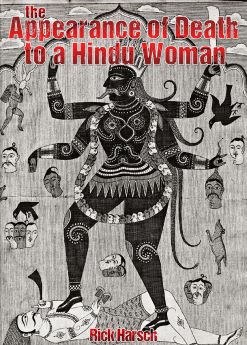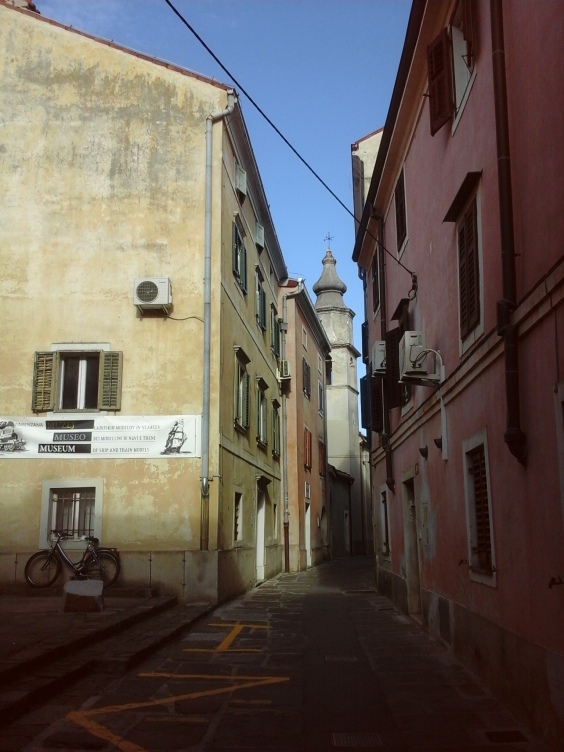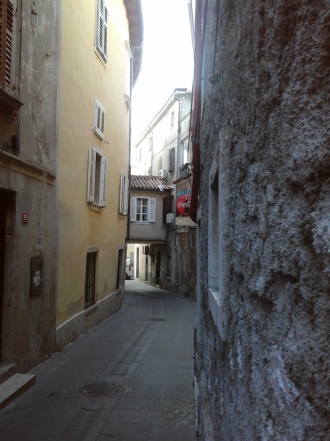A little about what the psychotic Vasco da Gama did in India

Vasco da Gama as depicted by Arjun Hektor Perumal Harsch
Vasco goes to India
Currently throughout the world it has become a commonplace observation that the United States is the successor of the British empire; yet the simplicity of the notion blandly obscures (especially in the implied natural progression of historical blocks of time and ravage) the lasting devastation wrought by the Brits, who essentially, beginning as little more than pirates and con men, transmogrified India from the wealthiest region in the world into a perpetually desolate lesser chunk of land, committing what ought to be considered if the word is to be used at all an economic form of genocide. Strangely, at least to me, the, for lack of a better term, racism that allowed the swindling and subsequent conquering of India is widely considered an anachronism, as if self-serving behavior at the deathly expense of others was once in moral cahoots with enlightenment. Interestingly the only defense of attenuate British terror is multiple offense, though I would defend the word racist by conjuring offense against the Scots and the Irish, peoples it was easy enough to watch keel over but far more difficult to outright murder. The phenomenon was, of course, visited upon India first by the Portuguese, and none so gruesomely, with such bloody arrogance, as history’s esteemed Vasco da Gama, whose less examined second visit to India degenerated into a paroxysm of revenge. At the time, the Hindu kingdom of Vijanagar was a center for trade that dealt primarily with Muslim traders, who rightly viewed the sudden appearance of da Gama as a threat to a centuries old system. On his first visit, some of them seized and held captive several of his crew. Da Gama held the Hindu ruler of the coast, the zamorin, and the matter was worked out without bloodshed. But on his return voyage Vasco da Gama was responsible for the one innovation Europeans introduced into the Indian Ocean trading system: the use of force to extract favorable terms of trade — for the first time in the history of the Indian Ocean, merchants arrived supported by navies. Much is made of the strange absence of great navies among the successive empires of south Asia, but the simple fact seems to be that as trade was established and generally followed international rules from China to Africa and even into the Mediterranean, the hinterland empires had no motive for opening their treasuries to build warships.
Vasco da Gama may not have known that he was lucky to escape India alive, but he should have. Surely he was to a degree a learned man, quite aware — this is of the utmost import — that a journey to India by sea around Africa had the potential to devastate the markets of the land route and Red Sea route he knew to be ancient. In fact, that was why he was sent. He would have known that he was sailing into a web of trade that was centuries old, offering insultingly trifling gifts to a locally venerated and wealthy ruler; how could he not have known that the established traders would take umbrage at his arrogant foray to the Malabar coast? Though da Gama knew that most of the traders were Muslim — this was, after all, an attack on the Ottoman rear — he made no religious distinction in the inner maelstrom of his insane wrath. He was after Calicut, site of his considerably petty ordeal the first time over, and its zamorin. But his revenge could not wait — he attacked the first merchant ship he saw near the Indian coast. Though it was indeed a cargo ship, it was also transporting pilgrims returning from Mecca. One might consider pilgrims pious innocents (no popery intended), but not if one were a deranged Portuguese captain, who could only consider them inhuman infidels — or, at best, in the way. Da Gama captured the ship effortlessly and stole all the cargo, but this was just the first act in a bloodthirsty play of vengeance and he was not about to let the matter rest there, with a simple act of piracy: The vessel was filled with gunpowder and set on fire; those who leapt into the sea were pursued by da Gama’s men and slaughtered, about 700 of them — the only people spared were about 20 children who would be forcibly converted. The zamorin thus had certain news of the return of Vasco da Gama, and sent emissaries to try to persuade him to approach in peace (as if it were not too late). However, once da Gama actually arrived off Calicut, a Hindu ambassador sent to the ship with generous offers intended to calm da Gama was arrested and the Portuguese bombarded the city for three days. Meanwhile, 20 trading vessels off the town were seized, their goods stolen, and about 800 commercial sailors captured. Da Gama ordered his men to take these prisoners ashore and amputate their hands, ears, and noses, which ex-excrescences were subsequently piled in a boat. The rest of the bleeding victims then had their feet bound together, and since they obviously could not untie themselves with their hands, that left their teeth to be stove in (the Portuguese were quite thorough in mid-atrocity — who else would have thought it necessary to prevent these noseless, earless, handless wretches biting through the ropes that bound them?), as they duly were before they were tossed in yet a separate boat that was set alight. The only survivor amongst these particular innocents was the ambassador, whose boat was sent not afire off to where he has become a ghostly phantom of history. The order of all these events is rather difficult to sort out, but suffice the mention that the original fire ship reappeared, drifted ashore, and there were, amazingly, a few survivors, apparently aside from the stolen children — and a number of grieving relatives clamoring toward shore to search for their men in what must have been a terribly wrenching scene to any sane observer. Da Gama was immune to wrench; he had his men keep the relatives at a distance, and then, upon finding that there were indeed some survivors, had them strung up on masts (I don’t know of which ships, but he had about 19 extra at his disposal) and used for target practice by his already expert crossbowmen. Strangely, after all this, another ambassador was sent by the zamorin — who knows how he fell into disfavor, to get such a task — and this one, quoting Richard Hall from Empires of the Monsoon, “had his lips cut off, his ears cut off, the ears of a dog were sewn on instead, and the Brahmin was sent back to the zamorin in that state. He had brought with him three young boys,” sons and a nephew, who were hung and afterwards sent ashore, dead of course. This account leaves out a total of the dead, for no tally from the bombardment is given, nor details of further massacres that occurred before da Gama’s holds were filled and he had turned for home; but there is plenty of evidence that his example was an inspiration to his crew, and fellow captains and their crews, who perpetrated a variety of tortures on a variety of captives before setting off home.
Should anyone out there read this bescumbered page of maritime history, I urge you to treat it as a message in a bottle, for da Gama remains a figure of merit in history books (which is already rather risible, given that the cape had already been rounded by 1498 and his trip across the Arabian Sea required, simply, the pilotage of a Gujarati seaman picked off the east coast of Africa), but was in reality a figure to match the most monstrous malefactors of even the 20th century. At any rate, Arjun will be immune.







 Growing sinister as the sun slides toward the horizon
Growing sinister as the sun slides toward the horizon








